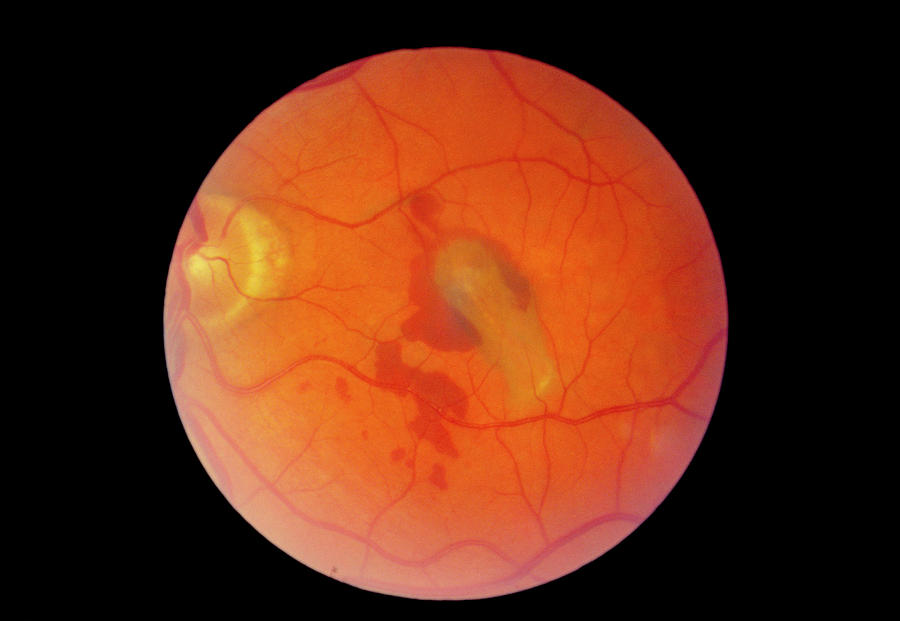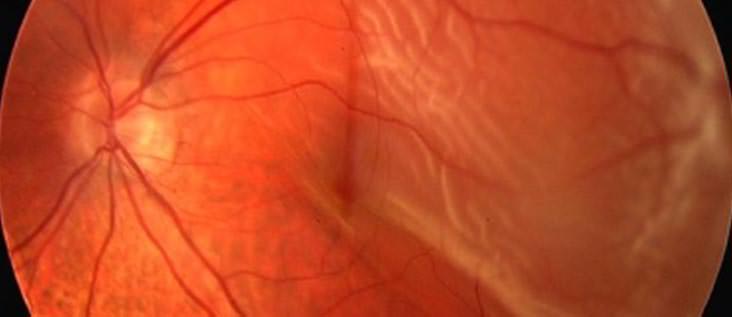


When the retina is torn in the lower parts of the fundus, the detachment progresses relatively slowly, over several weeks or months, without causing defects in the field of vision for a long time. Temporary improvement of visual functions occurs only with a recent retinal detachment with the prolonged existence of the defect, the retina loses elasticity and mobility, which is why it cannot fit into place on its own. However, during the day, the symptoms of retinal detachment return again. Sometimes in the morning, visual acuity improves for a while, and the visual fields expand, which is associated with partial resorption of fluid during sleep and independent retinal fit. With further progression of retinal detachment, a “veil” appears in front of the eyes (according to patients, a “wide curtain, curtain”), which increases over time and may occupy most or all of the field of vision. These phenomena indicate irritation of the photosensitive cells of the retina caused by traction from the vitreous body. When the retinal vessel ruptures, there is a flicker of “flies” and black dots in front of the eyes, pain in the eye. These include flashes of light (photopsies) in front of the eyes and zigzag lines (metamorphopsies).

SymptomsĪt the beginning of the disease there are symptoms-harbingers – the so-called light phenomena. In the presence of bilateral cataracts, the risk of bilateral retinal detachment increases to 25-30%. In most cases, retinal detachment develops in one eye, in 15% of patients there is a risk of bilateral pathology. The traction mechanism of detachment is caused by tension (traction) of the retina by fibrinous cords or newly formed vessels growing into the vitreous body.įactors that increase the risk of retinal detachment are myopia, astigmatism, degenerative changes in the fundus, eye surgery, diabetes mellitus, vascular pathology, pregnancy, cases of similar pathology in close relatives, etc.

The accumulation of fluid in the subretinal space (under the retina) leads to secondary exudative (serous) retinal detachment.The occurrence of secondary retinal detachment is observed against the background of various pathological processes of the eye: tumor, inflammatory (with uveitis, retinitis, chorioretinitis), occlusive (occlusion of the central retinal artery), diabetic retinopathy, sickle cell anemia, pregnancy toxicosis, hypertension, etc.At the same time, the detachment of the retina can occur at any time: directly at the time of injury, immediately after it, or several years later. Retinal detachment of traumatic genesis is caused by eye injuries (including surgical ones).According to the type of defect, the primary retinal detachment may be bubble-shaped or flat according to the degree of detachment – limited or total. With various types of retinal dystrophy (latticed, carpal, retinoschisis, etc.), a rupture in a degeneratively altered area can be triggered by sudden movements, excessive physical exertion, traumatic brain injury, falls, or occur spontaneously. This condition develops with the thinning of the retina in the zones of peripheral dystrophy. The development of regmatogenic retinal detachment is associated with the rupture of the retina and the ingress of fluid from the vitreous body under it.Causes and classificationĪccording to the mechanism of pathology formation, there are regmatogenic (primary), traumatic and secondary (exudative and traction) retinal detachment. If specialized care is not provided in time, retinal detachment can lead to vision loss quite quickly. With retinal detachment, the layer of photoreceptor cells (rods and cones), for certain reasons, separates from the outer layer of the retina – the pigment epithelium, which leads to a violation of the trophic and functioning of the retina. To date, retinal detachment is the leading cause of blindness and disability at the same time, 70% of cases of this pathology develop in people of working age. Retinal detachment is a dangerous outcome and the most difficult pathological condition in surgical ophthalmology, which is diagnosed annually in 5-20 people for every 100 thousand of the population. Prognosis and prevention General information


 0 kommentar(er)
0 kommentar(er)
